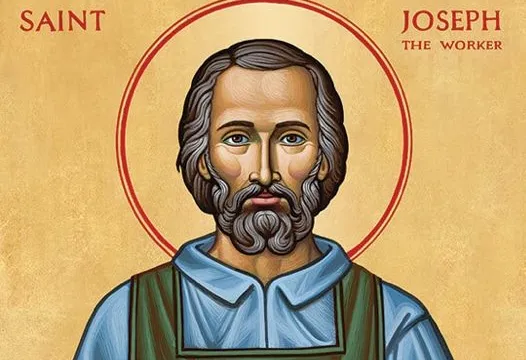How Mythology Reveals Human Nature and Modern Risks
Mythology has long served as a mirror reflecting the depths of human psychology and societal fears. From ancient tales to modern narratives, myths encode timeless truths about human nature, warnings about potential dangers, and moral lessons that remain relevant today. Understanding these stories helps us navigate contemporary risks and behaviors, revealing patterns rooted in our collective subconscious.
In this article, we explore how mythology functions as a guide to understanding our innate tendencies and how these age-old stories continue to influence modern risk perception and management. By connecting mythic archetypes with present-day examples, we uncover the enduring power of myth in shaping human responses to the unknown.
Table of Contents
- Mythology as a Reflection of Human Nature
- Mythological Archetypes and Their Modern Parallels
- Divine Guidance and Human Decision-Making
- Nature’s Wrath and Humanity’s Fears of the Unknown
- Artistic Depictions of Mythology and Their Psychological Impact
- From Myth to Modern Risk Management: Lessons Learned
- Mythology as a Tool for Ethical Reflection in Technology
- Conclusion
Mythology as a Reflection of Human Nature
Ancient myths serve as vivid stories that embody universal human traits such as hubris, greed, and fear. These stories often feature divine or supernatural characters that mirror our own desires, anxieties, and moral struggles. For example, Greek mythology’s gods are not perfect beings but often display human flaws, making them relatable yet cautionary figures.
Take Zeus, the king of Greek gods. He embodies authority and power but also exhibits human-like flaws such as jealousy, impulsiveness, and hubris. His stories warn of the dangers of overreach and arrogance, which can lead to downfall—a theme that resonates with contemporary concerns about overconfidence in technological or political power.
Mythological Archetypes and Their Modern Parallels
Mythology introduces archetypes that continue to influence modern storytelling and behavior. These include the hero, the trickster, and the wise seer, each representing facets of human psychology and societal functioning.
The hero’s journey, exemplified by figures like Hercules or Odysseus, symbolizes personal growth through adversity. Psychologically, it reflects our internal quest for meaning and resilience. In modern times, this archetype appears in stories of innovation and perseverance amid crises.
The trickster—such as Loki in Norse myths or Coyote in Native American stories—embodies deception, cunning, and innovation. Today, trickster figures are seen in entrepreneurs disrupting markets or hackers navigating digital landscapes, illustrating both creative potential and risk.
The wise seer, like the Oracle of Delphi, symbolizes intuition and foresight. Modern equivalents include data scientists and AI prediction tools that attempt to forecast future events, often influencing critical decisions.
Divine Guidance and Human Decision-Making
Ancient cultures relied heavily on divine or supernatural insights to guide decisions. The oracles in Greek mythology, such as the Pythia at Delphi, provided cryptic prophecies that shaped societal actions and individual choices.
This reliance on divine guidance parallels today’s dependence on technology and data analytics. Just as ancient leaders sought divine insights, modern decision-makers often turn to algorithms or AI systems to reduce uncertainty. For example, some financial markets or strategic planning tools rely on complex models—similar in function to mythic oracles.
A contemporary example is the gates of olympus 1000 full game, which acts as a digital oracle influencing players’ perceptions of risk and reward, illustrating how modern digital tools can mirror ancient divine functions in shaping choices.
Nature’s Wrath and Humanity’s Fears of the Unknown
Mythological stories often depict natural disasters, like storms at sea or divine punishments, as manifestations of divine anger or cosmic imbalance. These tales encode fears of natural calamities and societal collapse, serving as early warnings of the unpredictable power of nature.
In a modern context, climate change and natural disasters evoke similar fears. Hurricanes, earthquakes, and floods are now seen through a mythic lens—symbols of humanity’s vulnerability and the need for resilience. Narratives around climate change often echo ancient stories, warning of societal hubris and the consequences of neglecting natural laws.
Artistic Depictions of Mythology and Their Psychological Impact
Art inspired by mythological themes influences societal values and collective subconscious. For example, Zeus seated on his throne, as depicted in classical sculptures or modern digital art, symbolizes divine authority and human aspiration.
The visual symbolism in artworks, including modern digital representations like «gates of olympus 1000 full game», reflects themes of power, risk, and divine intervention. Such imagery reinforces societal perceptions of authority and the inherent risks of overstepping boundaries—whether divine or technological.
From Myth to Modern Risk Management: Lessons Learned
Mythological stories offer valuable lessons for contemporary risk assessment. Recognizing human biases—such as overconfidence or fear—helps improve crisis management. For instance, understanding hubris in myths encourages humility in technological development and environmental policies.
Applying myth-inspired insights can guide the development of strategies that acknowledge human tendencies. This approach enhances resilience against natural disasters, financial crises, or technological failures by fostering humility, foresight, and ethical considerations.
Mythology as a Tool for Ethical Reflection in Technology
Advanced AI and automation pose moral dilemmas reminiscent of mythic tales of divine power and downfall. The myth of Icarus, who flew too close to the sun, warns of hubris and overambition—parallels with current technological developments that risk unintended consequences.
The «gates of olympus 1000 full game» can be seen as a metaphor for navigating divine-like powers in digital realms, emphasizing the importance of humility and ethical boundaries in technological innovation.
Conclusion
Mythology continues to be a vital source for understanding human nature and the risks we face today. These stories reveal core tendencies such as hubris, greed, and fear—traits that influence our decisions and societal trajectories.
By adopting a myth-informed perspective, we can foster ethical decision-making and build societal resilience against natural and technological challenges. As we navigate the unknown, embracing the lessons encoded in myth can help us develop a more cautious, reflective, and adaptive approach to the future.
“Mythology is not merely ancient stories; it is the blueprint of human behavior and the compass guiding us through uncertainty.” — Unknown
